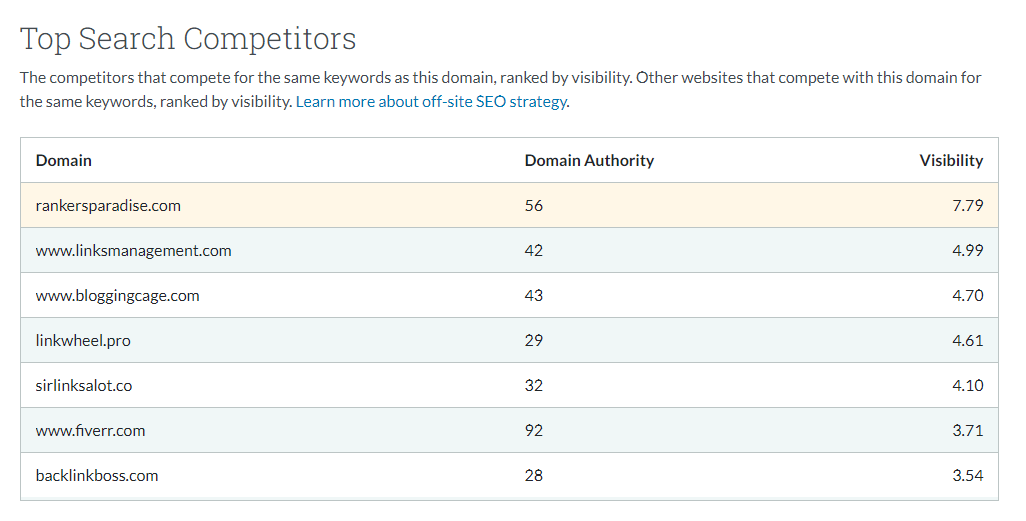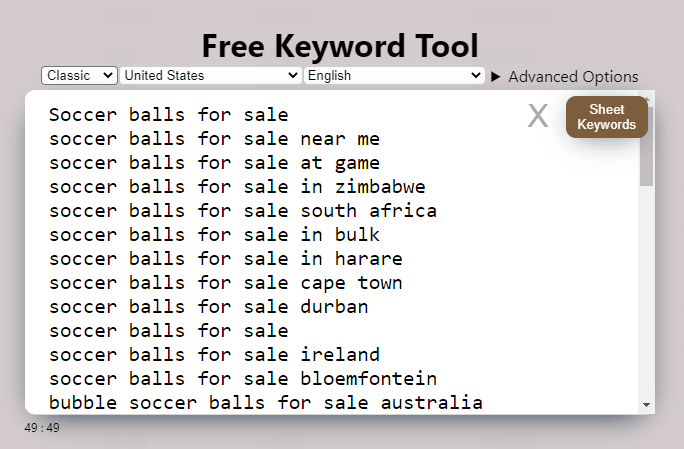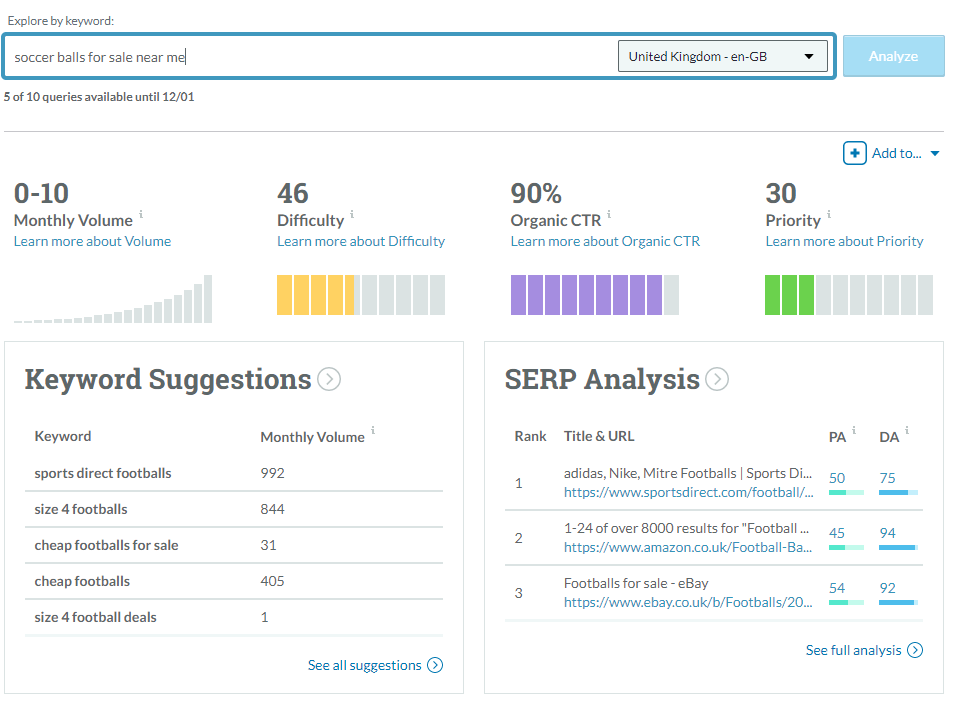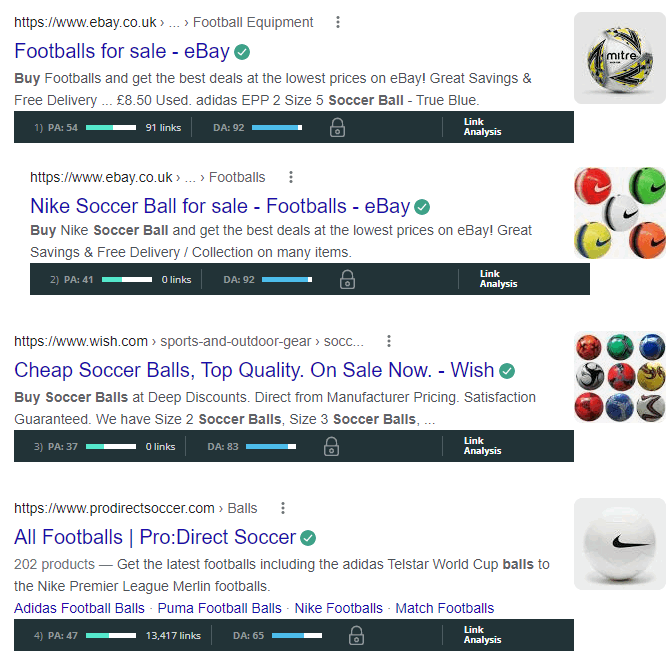When you know how to Google SEO with these secret tips you can get #1 first page website rankings. Follow the guide to hit the top spot.
Are you tired of buying many SEO courses and complicated Google ranking guides? Have you been testing hundreds of different SEO strategies, and pleading with the Google gods for a first page website ranking on Google, only to be disappointed?
You’re in luck, your quest is finally over. How to Google SEO to get a first page website ranking? The approach is fast and easy, and best of all, it works.
You may quickly and simply acquire first-page rankings for keywords that will attract targeted traffic and improve sales if you follow my #1 simple approach.
Here’s how it works:
1. Understand Your Google Reputation
Understanding the trustworthiness of your website is critical. It serves as the cornerstone for your whole search engine optimization strategy.
Which keywords will provide the most traffic to your site are determined by how authoritative Google believes your domain is.
If your domain is powerful in terms of SEO, you may target competitive keywords that attract a large number of visits. If your domain is bad, you may concentrate on keywords that bring in less traffic but are simple to rank for. When comparing two comparable websites, the one that has been around the longest will most certainly have more authority and backlinks.
How to Determine Domain Authority in 3 Simple Steps
- Use Moz Domain Analysis SEO tool.
- Enter the URL of your website into the analyse domain search bar.
- Make a note of the DA rank and your backlinks count.

Things to take note of:
- Linking root domains
- Ranking keywords
- Spam score
- Your top ranking pages by links
- Top ranking keywords
- Top featured snippets
- Top Google search competitors
- Top questions relevant to your website that bring people to your site from Google
2. Conduct thorough SEO keyword research.
The purpose of keyword research is to find relevant keywords that will rank well and bring in targeted visitors.
There are several free and paid resources accessible to help you with this process; but, for the sake of the readers’ time and money, let’s look at some of the free options:
The first step is to generate a list of 15-20 keywords that customers may use to discover your product or service online.
You must choose terms with both buying intent and research intent. Each keyword should ideally be at least three words long. This ensures first page #1 rankings are easier and faster.
If I were to create an online store selling soccer equipment, I may consider buyer intent keywords like:
- Low-cost soccer boots for sale
- Discount soccer coaching equipment
- Soccer balls for sale
Also go for some information-focused terms for blog posts, such as:
- Soccer coaching tips
- How to take a free kick
- A soccer pitch dimensions
Copy and paste the recommended keywords into Keywordsheeter.com. Simply hit “run” and let it alone for around 2 minutes.

The next step is to go to Moz Keyword Explorer, input the keywords generated by Keywordsheeter.com, and then choose the target country and hit the analyse button.

Take note of the monthly search volume data and also the other keyword suggestions. Also analyse the SERP analysis, these are the sites you are competing against for #1 Google rankings.
Disregard any phrases with a high search volumes that are competitive. Make a note of low search volume keywords (in the hundreds) (10-100). Continue to run keyword research until you have a limited list of just 20-30 keywords. These should be low competition keywords.
How do you know they have low competition and are easy to rank?
Look at the websites that are ranking for the keyword and take note of:
- Their META DATA (is the keyword in the Title and Description TAGS)
- Does the ranking page have long content
- Does the ranking page have many quality backlinks pointing to it (use Ahrefs Backlinks Checker for this)
An alternative keyword research tool can be found at wordstream.com, which provides both functions (generating keywords and giving search volume).
Last but not least, ensure that the Moz bar is enabled. Conduct a Google search for each phrase and study the results.

If two or more of the websites ranking on page one have a lower domain authority (DA) than you (as established in step one) and fewer than five links to the pages, you have a good chance of ranking for that keyword.
Repeat this approach for each of the 20-to-30 keywords you want to concentrate on.
You should have a minimum of 5 keywords at the end.
3. How to determine the purpose of the keyword.
Following the selection of your top five keywords, the following step is to discover the motives behind your target audience’s searches. Search intent analysis will disclose what kind of content you should create in order to get good search engine rankings.
Simply put the word into Google and hit the enter key.
We must now decide on two things:
- How does Google present each of the ten sorts of results?
- What format do they take (videos, PDFs, images, product pages, etc.)?
and why precisely is such a search required:
- The information seeker’s purpose is to gather knowledge. For example, suppose you need to grasp the fundamentals of sending an email or simply what an email is.
- Intentional navigation is defined as a concentration on a certain destination URL. For example, signing up for Twitter or Gmail.
- Intention to make a purchase (transactional intent). As an example, get boiler quotes and web design options.
Product/service pages/landing pages should be used for keywords having a transactional meaning rather than informational purpose.
Navigational keywords are only beneficial for the particular website or company being searched.
If you rank for “Twitter,” you won’t get many visits since almost all of them will go directly to twitter.com.
4. Create content that is (Google) search engine optimized.
It is now time to go to work, having chosen your keywords and the overall tone of the content you want to generate in response to them.
It’s most likely a blog post or a website for a product or service, and the same SEO techniques apply to both.
URL loaded with keywords
The major term in your URL should never be too long or obscure.
Many people use the whole title in the URL; for example, if my desired keyword is “how to Google SEO,” my URL would be rankersparadise.com/how-to-google-seo/.
Please do not make the URL too long. Ensure your main focus keyword is in there.
Title’s with key words
Page and post titles should incorporate your major keyword.
Using a synonym in the title is a valid SEO strategy since Google considers them similarly, but using an unrelated phrase is not.
I always make sure that my Page Title Tag is exactly the same as the pahe H1 TAG.
Change the title to contain pertinent alternative keywords.
In the title, incorporate adjectives such as “best,” “rated,” “lowest price” “a number” and so on to attract more readers with minimal work.
When doing an online search, many people add modifiers like these to the core phrase. Although this isn’t essential when using modifiers, it’s a nice extra to get more clicks from the SERPs.
Put the title in the H1 tag.
Many themes, however, will override WordPress’s default H1 tag wrapping of the title. Is this the case with your website? If not, correct it.
Make use of media such as photographs and videos.
Including visual information in your posts, such as photographs and videos, not only increases their aesthetic value, but also encourages users to spend longer time on your site, which benefits your SEO efforts.
H2 with keywords
All subheadings should utilize the H2 heading level. Put your main keyword in one H2 TAG and add synonyms of it in other H2 headings.
Links to outside sources
Outbound links to similar external sites improve the user experience while also assisting Google in better understanding the content of your website.
Image alternative text
Every image you use should have an alt tag with alternative text. Please do not leave it blank. Make sure your keyword is used once in an image ALT TAG. Use this only once, otherwise you run the risk of overoptimization through keyword stuffing.
Good quality unique long content (Google loves it)
Google has lately began to prioritize longer content over shorter content. Each page should have at least 1500 words. To stay ahead of the competition, create your content using SEM Rush SEO Writing Assistant to create better content to outrank your competition on Google search.
5. How to create a network to earn links.
The objective of every website should be to rank high enough on Google’s first page to attract visitors. Unless you have a really big and authoritative site, your website will need backlinks (typically a lot of links) to reach to the top page.
Both types of links should be included utilized to rank a webpage.
Links within a website (internal links)
Internal links are connections to other pages on your website. Many individuals are unaware of how easy it is to get them.
There are two significant benefits of using internal connections. Internal links help your page rankings in Google as well as increasing the time viewers spend on your site, which is another factor in Google’s algorithm.
Links from other Online Resources
It’s like earning votes when other websites connect to yours.
When searching for a subject, Google prioritizes results that have earned the most votes. There has been no significant adjustment in Google’s perception of backlinks as the most essential component of SEO. It is, however, difficult to get them on your own.
If you want visitors to connect to your site, you must devise and implement a strategy.
If you’re new to link building, link exchanges and web 2.0 backlinks are a wonderful place to start. When used judiciously, it has the potential to help you achieve remarkable success.
You may also sign up for our monthly SEO package, you get your website backlinks on a daily basis to ensure you get #1 Google rankings.
6. Keep an eye on website ranking on Google and how many visitors you have.
The next step is to begin tracking your pages’ ranks for target keywords so that you may receive instant feedback on the effectiveness of your link-building efforts.
Page rankings will fluctuate based on how much effort you put into SEO (such as link building, content optimization, site performance improvements, etc.). This will show you which of your efforts are yielding long-term results.
Using the feedback offered by the change in rankings, you may put more effort into techniques that have demonstrated to improve your position and less effort into those that have had either no or negative results.
With Serp Surf, you can track your keyword rankings on a daily basis for free. Make sure that you record the ranking results with a date stamp for future reference.
7. Optimize your page SEO after it has reached Page One.
When your page eventually reaches the first page for the desired phrase, further ranking factors such as CTR (click through rate), time on page, and so on will begin to play a part.
Not only must you continue to build backlinks, but you must also do the following to keep your page on the top page of search results:
Make your title tag and meta description as engaging as possible to increase Google clicks.
Both of these variables are taken into account by search engines before recommending a page to a user.
Making your website look good is similar to polishing your title and meta tag. People build ideas about your site before going to it depending on how the META DATA reads.
Consider the following as an example of the importance of click-through rate in deciding position:
Assume you’re now raking in position 10 on Google, but you’ve just changed your title and meta description to make you more appealing than the sites ranking above.
If Google observes that more people are clicking on your page, which is now placed 10, than on sites further up in the results, it will move your page up in the rankings.
Increase the Length of Stay on the website
The dwell time is the amount of time it takes for a user to click on a search result and then return to the search results after viewing the website.
Google views a user’s time spent on a website to be a measure of their satisfaction with the service they are getting.
You may improve dwell time in four ways:
Never cease adding fresh content to the website.
Visitors will be more satisfied with your content and will spend more time on your site if you consistently provide fresh, relevant stuff.
Link your pages to pass visitors through your site.
Internal links, as stated in point five, may be used to increase stay length. Internal linking delivers extra reading content to your readers.
This method works especially well when used to link to other articles that are thematically comparable to the one being addressed.
Improve your website’s loading speed.
Google launched a “speed update” in July of 2018 that favored faster websites. As a result, there is a strong relationship between speed and performance in the rankings. This secondary influence is mediated by dwelling time.
If a visitor clicks on your site from a search engine result page, but the page takes too long to load and show the content they came to see, the user is likely to quit and never return, lowering your dwell time. Use this tool to do a full audit of your website and identify any areas for improvement.
Create an eye-catching design for the content.
Content is more likely to be read when it is provided on an appealing and well-designed page.
They are more likely to complete reading an article if it is easy to understand.
The simple steps to a first-page Google result are outlined here. Please keep in mind that I said “simple,” not “easy,” since obtaining a high Google ranking is no longer a straightforward endeavor. However, if you put out the work and are resourceful, you will undoubtedly succeed.
Obtaining a high Google page rank requires a significant amount of time and work, but the results are well worth it.
Keep learning how to Google SEO:
Free Backlinks You Can Get Right Now
Do You Have A Profitable Low Competition Keyword?
You can buy backlinks from our SEO store, our services are proven to get #1 Google ranking results.